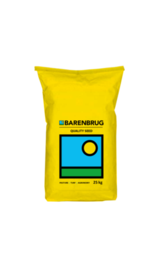Sweet lupines are used as a supplement in poultry, ostrich, dairy, beef, horse, sheep and goat rations. It contains approximately 32% protein and 10% oil and has an energy value of approximately 11 MJ/kg. Sweet lupines are especially sensitive to high temperatures during flowering and pod formation and are therefore planted during winter. Legumes such as lupines fix nitrogen into the soil, therefore one can expect large grains crop yields if they are planted in soil that was planted to lupines the previous season. Lupines prefer full sun and grows best in sandy soils with a slightly acidic pH.

Narrow Leaf Sweet and Bitter Lupines
Lupines
(Lupinus angustifolius)
- Sweet lupines are characterized by its white florescence
- Bitter lupines are characterized by its blue/purple florescence
- Best suited to winter rainfall areas
- Prefer sandy, well drained soils
- Does not tolerate waterlogged soil
- Mainly cultivated for seed production
- Ideal as a cover crop or green manure
- Bitter lupines are more vegetative than sweet lupines
- Not recommended for grazing
- Must be inoculated for effective nitrogen fixing

Lupines release nitrogen to the soil, which results in large yields of crops such as grains if these are planted in soil that was planted to lupines the previous season. Lupine prefers full sun and grows best in sandy soils with a slightly acidic pH.
Lupines release nitrogen to the soil, which results in large yields of crops such as grains if these are planted in soil that was planted to lupines the previous season. Lupine prefers full sun and grows best in sandy soils with a slightly acidic pH.
Lupines release nitrogen to the soil, which results in large yields of crops such as grains if these are planted in soil that was planted to lupines the previous season. Lupine prefers full sun and grows best in sandy soils with a slightly acidic pH.

